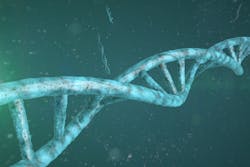University of Virginia School of Medicine researchers have discovered a key trigger for non-alcoholic fatty liver disease, a mysterious condition that causes fat to build up in the liver for no clear reason. The new insights help explain the condition in younger people and could lead to the first treatment for the most common liver disease in the world.
The culprit? Wrinkles forming in the cellular compartment that contains our DNA. Prior research by the UVA scientists suggested that these wrinkly cellular nuclei could be involved in common metabolic diseases such as diabetes and fatty liver disease and even aging itself. The new results bolster those findings and could lead to treatments targeting the wrinkles to stop fatty liver disease – and possibly slow or reverse aging.
The new research suggests the fault begins in a portion of the nucleus called the lamina. The lamina acts as a tether between the nuclear membrane and genetic material contained within, called chromatin. The formation of wrinkles in the lamina, the team found, affects the activity of genes that control the storage of fats. When these genes become hyperactive, the liver becomes stuffed with excess fats, leading to non-alcoholic fatty liver disease.
To verify their findings, the researchers looked at liver cells collected from younger human patients, ages 21-51, with non-alcoholic fatty liver disease. The scientists found exactly what they expected: wrinkly lamina. This helps explain why the condition can strike people of any age, the researchers say, and should be useful for identifying those at risk.

